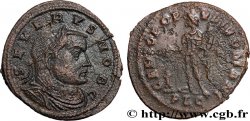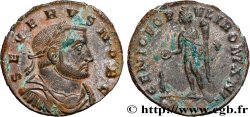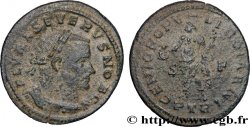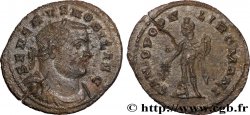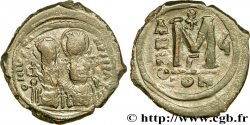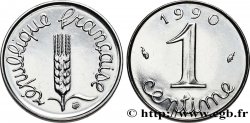brm_444264 - SEVERO II Huitième de follis ou quinaire
non disponibile.
Articolo venduto sul nostro negozio (2018)
Prezzo : 350.00 €
Articolo venduto sul nostro negozio (2018)
Prezzo : 350.00 €
Tipo : Huitième de follis ou quinaire
Data: 305
Nome della officina / città: Roma
Metallo : billone
Diametro : 16,5 mm
Asse di coniazione : 6 h.
Peso : 2,10 g.
Grado di rarità : R3
Commenti sullo stato di conservazione:
Exemplaire sur flan épais, parfaitement centré des deux côtés avec les grènetis visibles. Beau portrait de Sévère II. Joli revers inhabituel. Patine vert foncé
N° nelle opere di riferimento :
Pedigree :
Cet exemplaire provient du stock d’Alain Poinsignon et de la collection MG
Diritto
Titolatura diritto : SEVERVS NOB CAES.
Descrittivo diritto : Buste lauré, drapé et cuirassé de Sévère II César à droite, vu de trois quarts en avant (A*).
Traduzione diritto : “Severus Nobilissimus Cæsar” (Sévère très noble césar).
Rovescio
Titolatura rovescio : PRINCIPI IVENTVTIS.
Descrittivo rovescio : Le prince vêtu militairement debout à droite, tenant une haste transversale de la main droite et un globe de la main gauche.
Traduzione rovescio : “Principi Iuventutis” (Au prince de la jeunesse).
Commento
Rubans de type 3. Sans césure dans la légende de revers. Ptéryges invisibles sous le paludamentum. Monnaie divisionnaire liée à un donativum, certainement à l’occasion de l’accession de Sévère II au césarat le 1er mai 305. Le poids de cet exemplaire (2,10 g) semblerait indiquer plutôt un quart de follis (denier) qu’un huitième de follis (quinaire), mais son diamètre et son type semblent plutôt le faire entrer dans cette seconde catégorie.
Type 3 ribbons. Without caesura in the reverse legend. Pteryges invisible under the paludamentum. Divisional coinage linked to a donativum, certainly on the occasion of the accession of Severus II to the Caesarate on May 1, 305. The weight of this example (2.10 g) would seem to indicate a quarter of a follis (denarius) rather than an eighth of a follis (quinary), but its diameter and type seem to place it in this second category.
Type 3 ribbons. Without caesura in the reverse legend. Pteryges invisible under the paludamentum. Divisional coinage linked to a donativum, certainly on the occasion of the accession of Severus II to the Caesarate on May 1, 305. The weight of this example (2.10 g) would seem to indicate a quarter of a follis (denarius) rather than an eighth of a follis (quinary), but its diameter and type seem to place it in this second category.








 Segnalare un errore
Segnalare un errore Stampate la pagina
Stampate la pagina Condividi mia selezione
Condividi mia selezione Fai una domanda
Fai una domanda Consegnare / vendere
Consegnare / vendere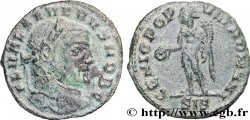
 Descrittivo
Descrittivo